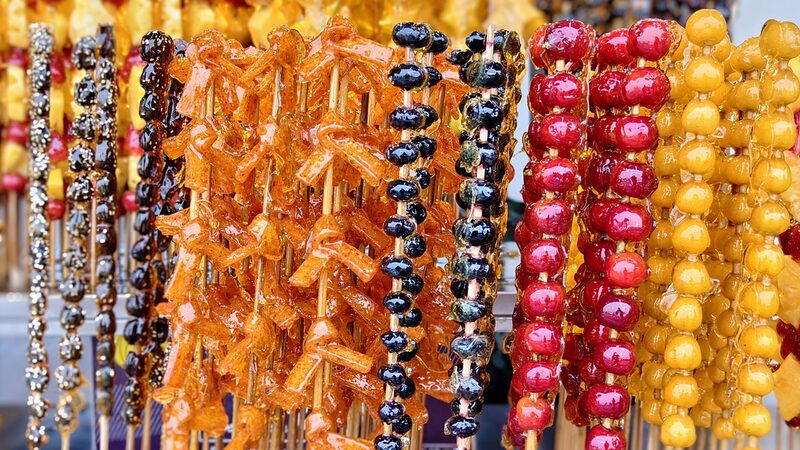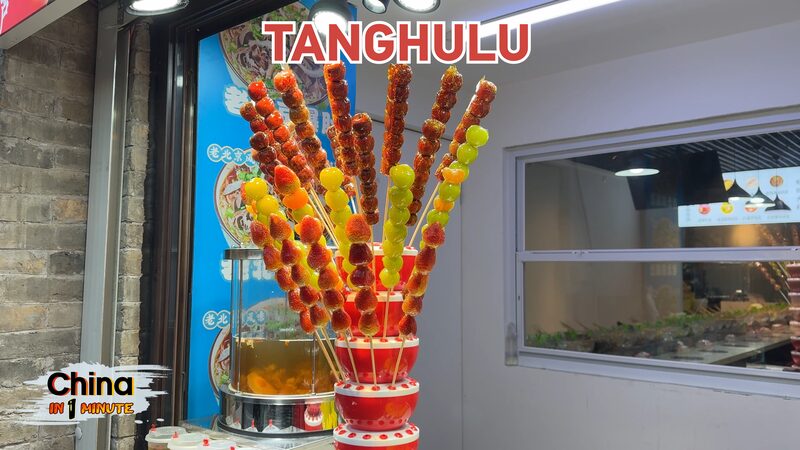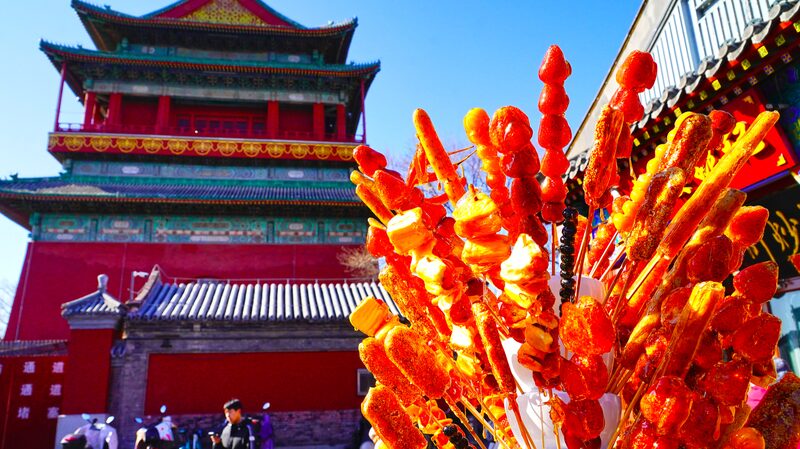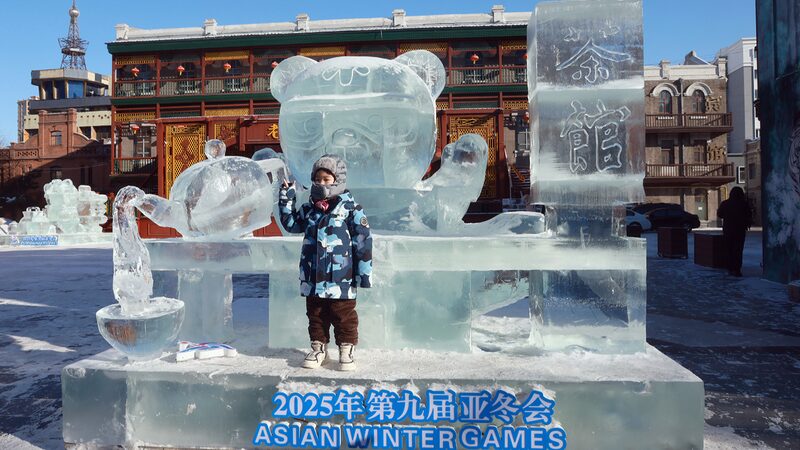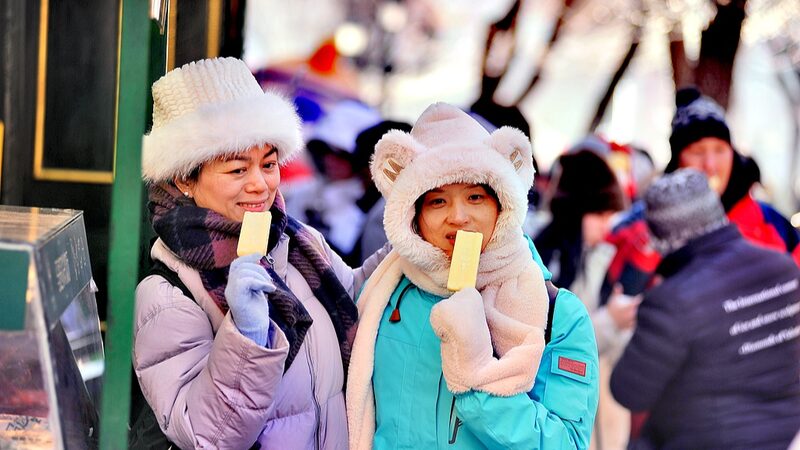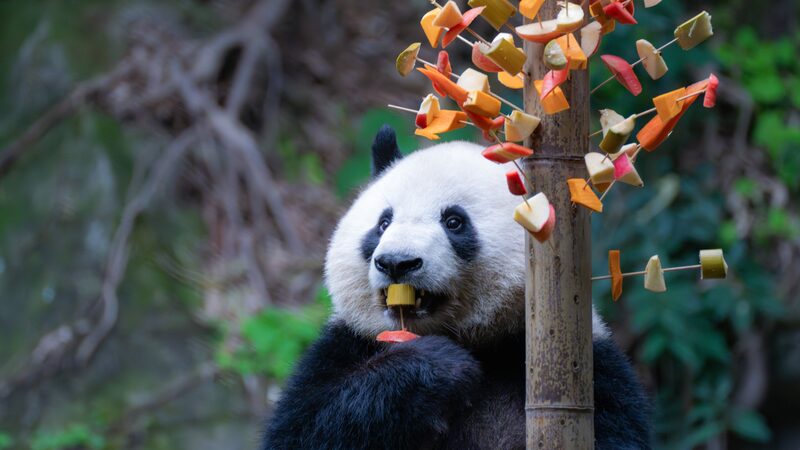As winter’s chill envelops the city of Harbin, a magical transformation takes place. The streets bustle with life as locals and visitors alike seek warmth and delight in one of China’s most beloved street foods: Tanghulu, or candied fruit skewers.
Tanghulu is more than just a treat; it’s a tradition that dates back centuries, capturing the essence of Chinese culinary artistry. Vendors line the snow-dusted sidewalks, their stalls adorned with vibrant arrays of skewered fruits glistening under a delicate sugar glaze. The sight is as enchanting as it is appetizing, with colors ranging from the deep reds of strawberries and hawthorn berries to the golden yellows of pineapples and the rich purples of grapes and figs.
Each skewer is a symphony of textures and flavors. The sugary coating shatters with a satisfying crunch, giving way to the soft, juicy fruit inside. The contrast between the crisp shell and the fresh fruit creates a delightful experience that is both refreshing and comforting in the brisk winter air.
Traditionally, hawthorn berries were the primary fruit used in Tanghulu, prized for their tartness that perfectly balances the sweetness of the sugar coating. Today, the variety has expanded to include an array of fruits, catering to diverse tastes and celebrating China’s rich agricultural bounty. Whether savoring the classic tang of hawthorn or exploring the exotic juiciness of tropical fruits, there’s a Tanghulu for every palate.
The process of making Tanghulu is as much a spectacle as the final product. Vendors skillfully dip skewered fruits into molten sugar, the liquid amber clinging to each piece before solidifying in the crisp air. The candy hardens almost instantly, forming a glossy shell that shines like glass. Watching this artistry unfold is a highlight for many, adding to the immersive cultural experience.
Harbin, renowned for its International Ice and Snow Sculpture Festival, becomes a winter wonderland where Tanghulu serves as both a treat and a symbol of warmth amidst the cold. The city’s unique blend of Chinese and Russian influences adds to its charm, making it a must-visit destination for travelers and cultural enthusiasts.
For the global reader, Tanghulu represents the richness of Asian street food culture—a simple yet profound tradition that brings communities together. Business professionals and investors may see the potential in the growing popularity of such traditional delicacies, while academics and researchers might explore Tanghulu’s significance in culinary history and its impact on modern gastronomy.
For members of the Asian diaspora, especially those with roots in China, indulging in Tanghulu can evoke a sense of nostalgia and connection to their heritage. It’s a reminder of home, of family outings on chilly evenings, and the shared joy of simple pleasures.
As the world becomes more interconnected, Tanghulu’s appeal continues to spread beyond China’s borders. Its presence in international food festivals and on the streets of Chinatowns worldwide signifies its growing influence and the universal love for sweet treats that bring a bit of delight to the coldest of days.
Whether you’re a curious traveler exploring Harbin’s icy streets, a food enthusiast eager to taste authentic Chinese street food, or someone longing for a sweet connection to culture, Tanghulu offers a delightful experience that transcends boundaries. So, this winter, let the crisp crunch and sweet flavors of Tanghulu warm your spirit, one skewer at a time.
Reference(s):
A sweet taste of winter in Harbin: Tanghulu, or candied fruit skewers
cgtn.com
